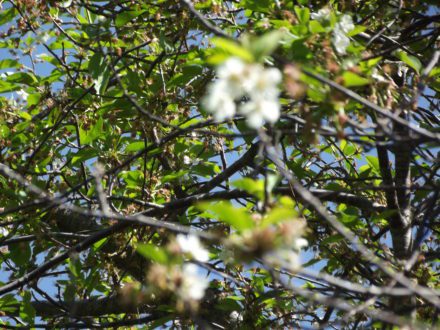Apr 12, 2018Colder-than-normal March damages crops, delays planting
In terms of heat, February in the Southeastern U.S. set records, so the swing to lower-than-normal temperatures in March came as a shock to many.
This year, the average temperature for March was lower than the average temperature for February. That colder March air slowed the growth of some crops and delayed planting of others due to low soil temperatures. Dry soils also contributed to planting delays in some parts of the state.
Frost during the month caused significant damage to early peaches and blueberries, and mild to moderate damage to midseason peaches and blueberries. Other crops did well and work in the fields proceeded as expected.
- In Albany, Georgia, the monthly average was 58.6 degrees Fahrenheit, 0.6 of a degree below normal.
- In Alma, Georgia, the monthly average was 57.9 F, 2.3 degrees below normal.
- In Athens, Georgia, the monthly average was 52.5 F, 1.8 degrees below normal.
- In Atlanta, the monthly average temperature was 53.5 F, 0.8 of a degree below normal.
- In Augusta, Georgia, the monthly average was 54.5 F, 1.4 degrees below normal.
- In Brunswick, Georgia, the monthly average was 59.3 F, 1 degree below normal.
- In Columbus, Georgia, the monthly average was 57.5 F, 0.3 of a degree below normal.
- In Macon, Georgia, the monthly average was 55.8 F, 1 degree below normal.
- In Savannah, Georgia, the monthly average was 58 F, 1.2 degrees below normal.
- In Rome, Georgia, the monthly average was 52 F, 0.1 of a degree below normal.
- In Valdosta, Georgia, the monthly average was 57.4 F, 3 degrees below normal.
Only a few temperature records were set last month.
On March 1, the temperature in Macon broke an old record high of 84 F from 1918 with a new record of 85 F. On that day, Savannah also reached 88 F, surpassing the old record of 86 F set in 1918 and 2017. Brunswick reached 85 F, breaking an old record of 82 F from 1971. Columbus tied a record high of 83 F on that date, also from 1918. On March 18, Brunswick tied a 1977 record high of 84 F.
Precipitation in most of the state was also below normal, which led to an increase in drought, particularly in the southeastern part of the state. Overall, 50 percent of the state was in drought by the end of the month.
The highest monthly total precipitation recorded by a National Weather Service station was 4.86 inches in Atlanta, 0.05 of an inch above normal. The lowest monthly total precipitation recorded was 1.22 inches in Savannah, 2.51 inches below normal.
- Albany received 5.24 inches, 1.08 inches above normal.
- Alma received 2.03 inches, 2.72 inches below normal.
- Athens received 3.18 inches, 1.25 inches below normal.
- Augusta received 3.21 inches, 0.97 of an inch below normal.
- Brunswick received 1.80 inches, 2.08 inches below normal.
- Columbus received 3.15 inches, 2.31 inches below normal.
- Macon received 2.65 inches, 1.90 inches below normal.
- Savannah received 1.65 inches, 1.21 inches below normal.
- Rome received 3.74 inches, 1.04 inches below normal.
- Valdosta received 1.82 inches, 3.05 inches below normal.
No daily precipitation records were set last month. The only snow reported was 0.2 of an inch at the Dillard, Georgia, Community Collaborative Rain, Hail and Snow Network (CoCoRaHS) station in Rabun County on March 7.
The highest daily rainfall total recorded by CoCoRaHS volunteers in March was 3.72 inches, recorded near Morganton, Georgia, in Fannin County on March 1. Observers north of Ellijay, Georgia, in Gilmer County and Helen, Georgia, in Habersham County received 3.67 and 3.66 inches, respectively, on the same day.
The highest monthly precipitation amount was 8.51 inches, a total recorded by an observer north of Helen, followed by 8.48 inches recorded by an observer near Cedartown, Georgia, in Polk County.
For more information, visit the Climate and Agriculture in the South East blog at https://site.extension.uga.edu/climate/, the Southeast Ag Climate Facebook page or @SE_AgClimate on Twitter. Share your weather and climate impacts on agriculture on the blog by emailing them to [email protected].
Pam Knox, University of Georgia Agricultural Climatologist with UGA Department of Crop and Soil Science















